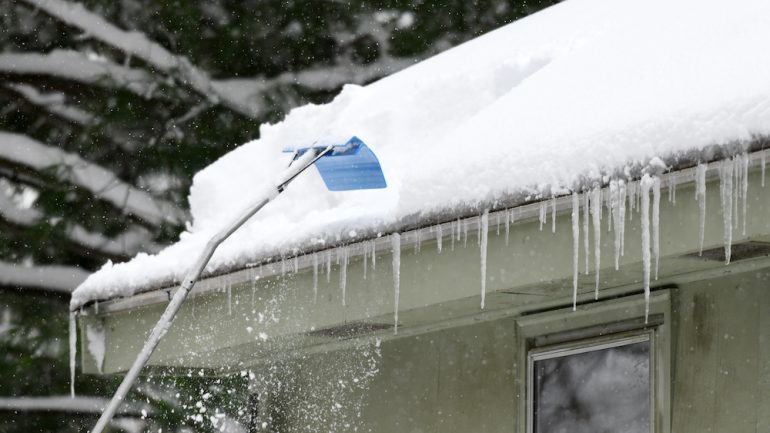A massive snowstorm paralyzed the nation’s heartland in February 2021. Millions faced frozen pipes, freeze-burned plants and treacherous sidewalks. How can you prepare for future Arctic blasts, even if such events are rare where you live?
Safety first
When a snowstorm heads your way, remember the four “Ps”: Protect pets, pipes, plants and people.
- Bring your pets inside. Make sure they have access to food, water and warmth. If they need to go outside for potty breaks, leave them out only long enough to accomplish the task.
- Wrap and cover all pipes and faucets exposed to outdoor cold. This includes exterior faucets, well and pool plumbing and tanks. Inside, drip your faucets, especially those located on walls adjacent to the outside.
- Open under-sink cabinet doors so that heat from the house can reach plumbing beneath. If temperatures will be below 20 degrees for more than two days, you may need to take more drastic steps. First, fill clean containers and bathtubs with water for backup household use. Then, cut off water from the main supply line to the house. Finally, drain the water left in the pipes by turning on all faucets until they run dry. If there’s no water in the lines, there’s nothing to freeze and split pipes.
- Cover outdoor shrubbery with blankets. You can buy felt moving blankets from a moving company or truck rental business. They are inexpensive, thick and warm, perfect for protecting your plants.
- Dress yourself and your family in layers of clothing rather than one heavy coat. Be sure to wrap your face and ears and wear a warm hat to prevent body heat loss through the top of your head. When out walking on icy surfaces, take short steps and hold onto handrails or other sources of stability.
Snow and ice removal
Residents in the northern tier of the country are accustomed to 25 or more inches of snow per year. There, using a snowblower is an annual fact of life. But for folks in mid-America or the southern states, heavy snowfall is rare. Still, you can prepare without a lot of expense.
Power shovels are essentially small snowblowers the size of a Weedwacker. Brands such as Toro, Snow Joe and Greenworks make power shovels starting at 10 inches wide that clear as much as 300 pounds of snow per minute. They are battery-powered, so there’s no messing with gasoline and exhaust fumes. Yet the machines can be hung on a hook in the garage or even stored in a closet. Power shovels range from around $75 to $300.
Clear heavy snow from your roof with a SnowPeeler rake. Its telescoping pole reaches 30 feet. Don’t scrape all the way to the shingles, which could damage them. Instead, use the rake to clear snow to a depth of just a few inches, which eases snow’s pressure on your roof. The SnowPeeler and similar tools start at less than $100.
For your car’s windshield, it is important to clear snow and ice without scratching. The Snow MOOver and similar tools use squeegees, brushes and scrapers to clear your view. They start at around $25.
Regain traction on sidewalks and steps with magnesium chloride pellets instead of rock salt, which loses effectiveness over time.
Related – Preventing a Frozen Pipes Disaster


